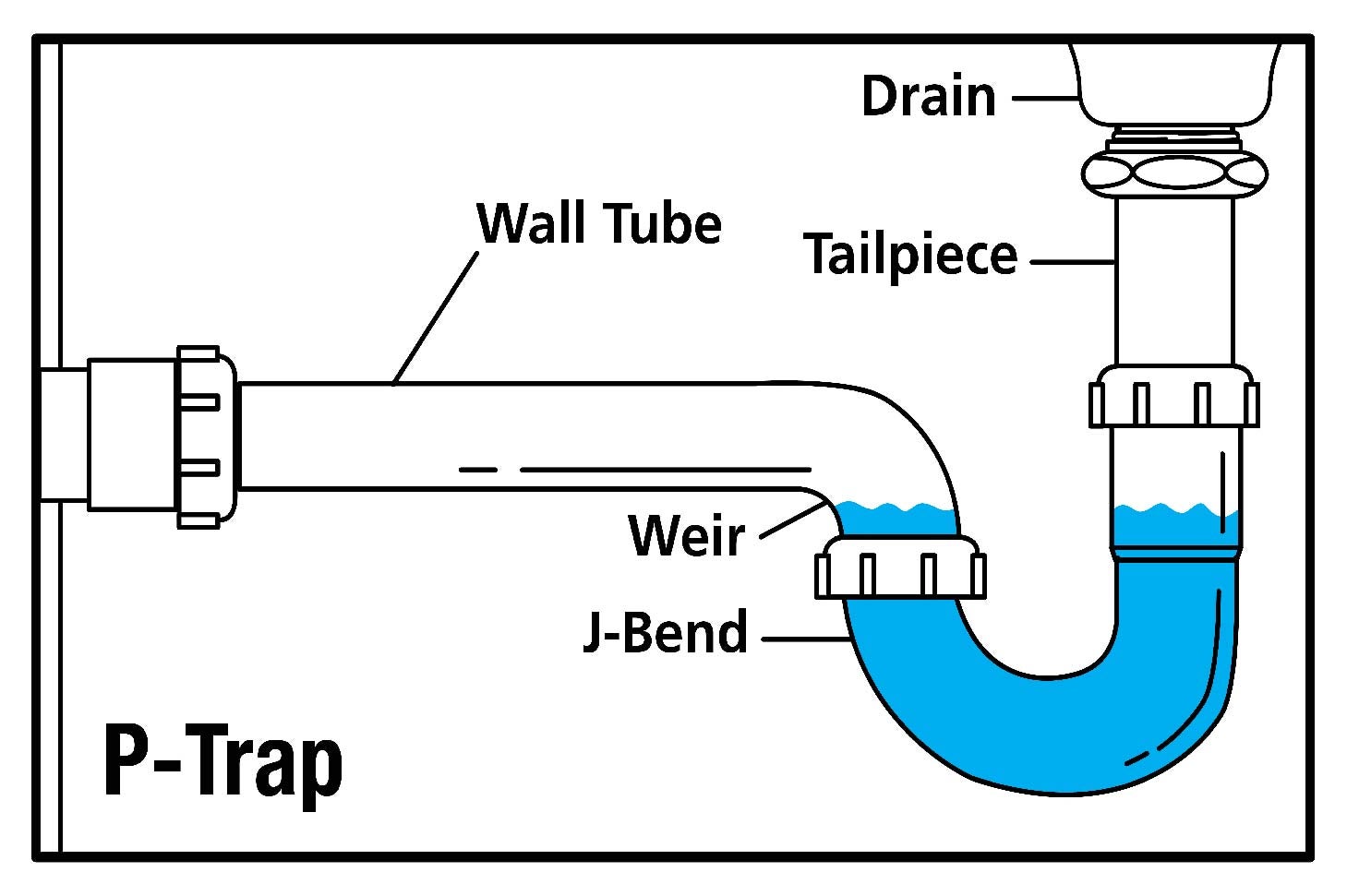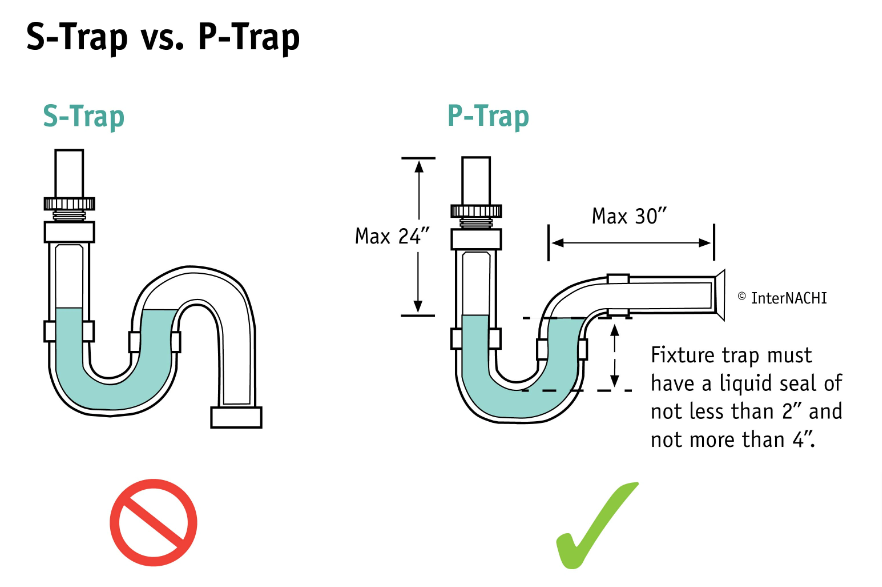When designing a plumbing system for your home or dwelling, you must first ensure that waste is efficiently and effectively discharged into the municipal sewer system or septic tank. However, your plumbing system functions in both directions.
A specialized fitting called a p-trap produces a formidable barrier that inhibits sewage gas and stink from entering your home. The trap is used in any plumbing system with a drain that receives sanitary waste from bathtubs, showers, and sinks.
How does a p-trap work?
P-traps, named after their shape, filter wastewater as it enters a plumbing system. They are connected to sinks, bathtubs, and showers with a J-bend on one end and exit into your drainage system. The J-bend is the portion of the p-trap that resembles the letter J.
The p-trap’s bend collects water and forms a 1-½-inch to 2-inch seal at the weir, preventing sewer gases and odors from entering the property.
The weir is the p-trap’s upper bend, where water begins to spill into the wall tube. With each usage of the fixture, new wastewater passes through the p-trap, replacing the old water in the curve with fresh water.

The p-trap also prevents trash and sediments from entering the drainage system. Its u-shape traps sediment and prevents it from entering the sewer.
How to Install a P-Trap
Sink p-trap: Measure and cut the wall tube to the appropriate length. Insert the wall tube into the connector, making sure you use a slip joint washer to create a seal. Tighten the seal with the appropriate sized nut included in the kit.
A nut and washer are then inserted on the tailpiece that connects to the fixture drain. Join the j-bend to the tailpiece by securing the seal with another washer and tightening it with the provided nut.
Its tubular form and straightforward installation allow you to easily snake the drain or unhook the p-trap to clean out debris. The Dearborn® Brass Tubular P-trap with Cleanout improves cleaning accessibility by providing a handy entry point for clearing obstructions and drains.

- Shower p-trap: This type is typically found in the center of the shower, near the drain. Use the same approach to measure and cut the drain line. When attaching the fitting to the drain, one of four connection types can be used: threaded, solvent, or rubber caulking.
After deciding the type of connection to utilize, install the drain and tighten the screw. Use PVC or ABS fittings to make any necessary directional modifications.

Locate the p-trap under the shower’s outlet. Dry-fit the drain pipe, p-trap, and fittings to check they are properly installed.. Disassemble these parts and solvent weld the p-trap, shower adaptor, and fittings.
Different types of p-traps
P-traps are made from two materials: brass and polypropylene. Although they serve the same function in the plumbing system, each material has advantages and disadvantages.
Brass p-traps are chrome plated, which gives them an aesthetically pleasant appearance. On the other hand, brass may and will rust with repeated use.

Polypropylene, its plastic sibling, is less visually pleasing but more resistant to corrosion and acidic reactions. Its lightweight design allows for easy assembly and removal if necessary.








